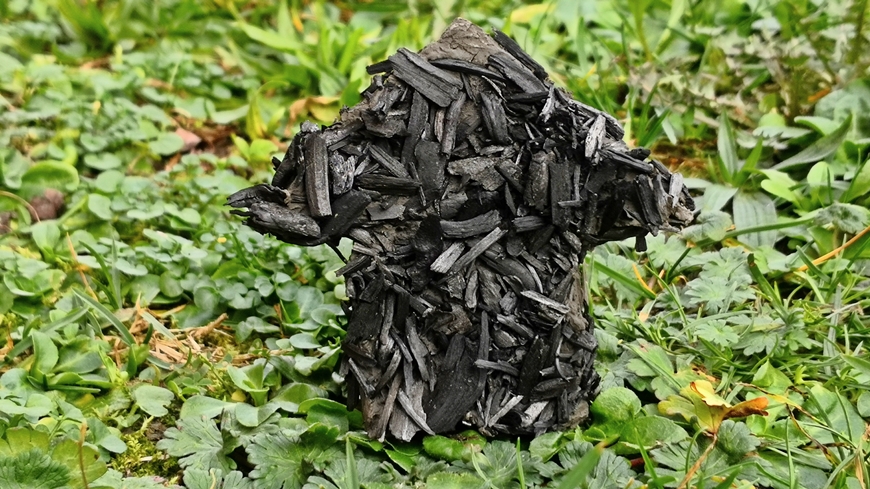Financial support for Empa research project
Plant-based insulation materials as CO2 sinks?

How CO2 can be bound long-term
A new research project by a team of scientists led by Jannis Wernery from Empa's Building Energy Materials and Components Lab is based on the idea of binding CO2 in newly developed insulation materials over the long term. To this end, plant-based raw materials – ideally waste products from agriculture and forestry – are to be processed into insulating materials for buildings. Most of the carbon bound in the biomass, which the plants have absorbed in the form of CO2 from the atmosphere during their growth, can be permanently fixed by a special heat treatment; it remains bound in the resulting biochar throughout the life of the building – and even far beyond: Indeed, when the latter is deconstructed, the biochar can be introduced directly into fields. There, it increases the fertility of the soil and remains stable for centuries to millennia – unlike other plant-based building materials, such as wood or cellulose insulation, which release the stored CO2 again when they rot or are utilized thermally.
"But there is still a lot to do before the idea can be put into practice," says physicist Wernery, who specializes in the research and development of insulation materials with his research group at Empa and is also collaborating with researchers at the Zurich University of Applied Sciences (ZHAW) on this new approach. Among other things, it is important to ensure that all the ingredients of the novel insulation materials are suitable for later use as "fertilizer"; a marketable insulation material must, of course, also be able to keep pace with established products in terms of thermal insulation and also guarantee adequate fire protection.
Empa researcher Wernery is convinced that biochar-based insulation could significantly improve Switzerland's CO2 balance in the future – if it succeeds in meeting this demanding set of requirements. An initial analysis has shown that a realistic partial replacement of conventional insulating materials such as EPS or mineral wool with biochar could save a good half a million tons of CO2 equivalents annually, on the one hand by avoiding emissions during the production of the conventional materials, and on the other hand by the long-term storage of CO2 in the biochar. This corresponds to over one percent of Switzerland's total greenhouse gas emissions.
Financial support – from several sources
Empa Zukunftsfonds: New ways of funding research
Many potentially groundbreaking ideas are born in the minds of researchers at Empa – not all of them can be realized, and for some there is simply no funding. The Empa Zukunftsfonds closes this gap; through professional fundraising, the Empa Zukunftsfonds supports exciting research projects that have not yet received funding elsewhere, as well as particularly promising young talents.
Dr. Jannis Wernery
Building Energy Materials and Components
Phone +41 58 765 49 46






